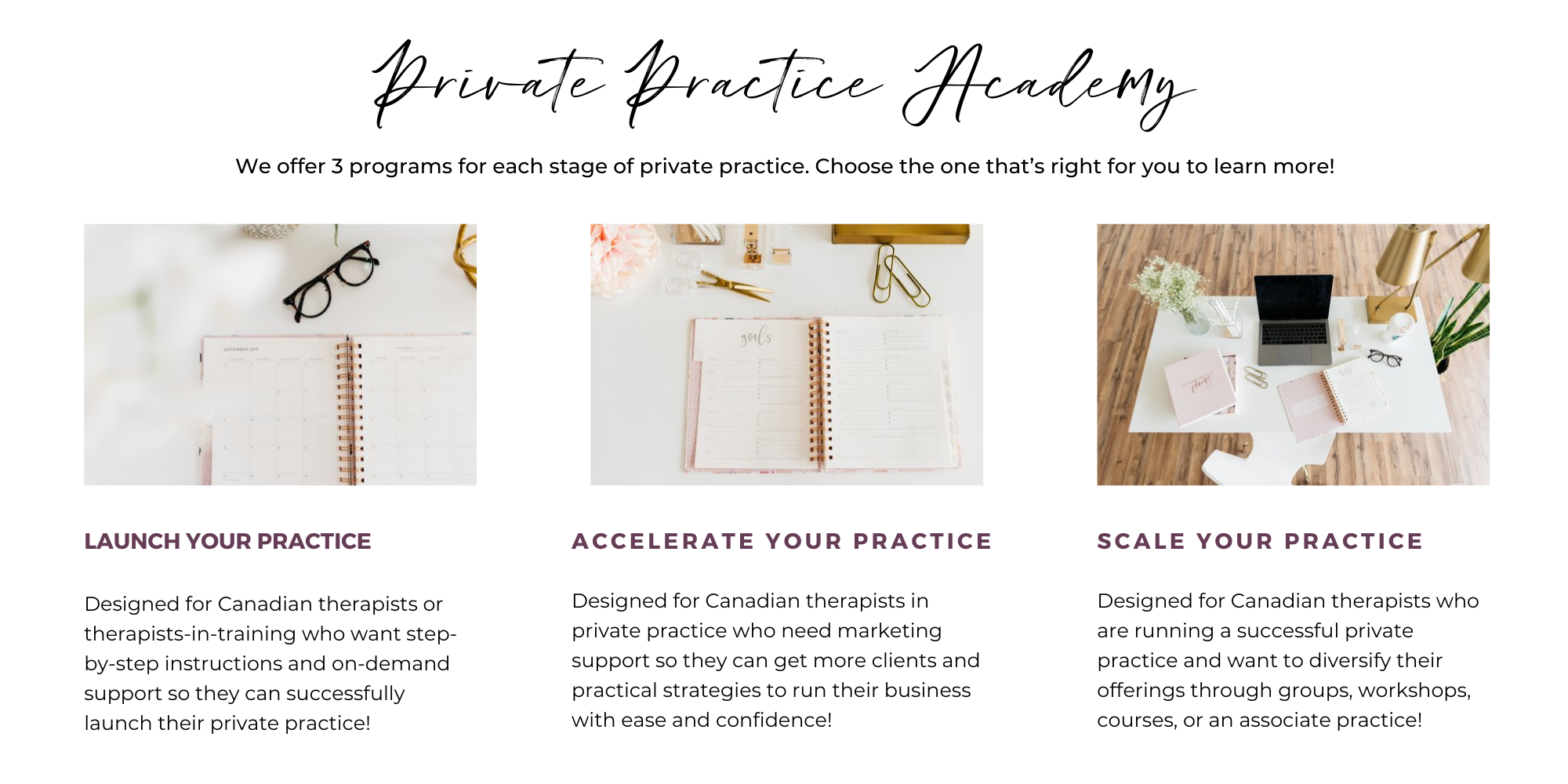3 Tips for Growing Your Associate Practice
Growing and expanding your private practice can be done successfully by developing courses or products, teaching workshops and running group programs. Many of these revenue generation strategies involve you as the therapist and business owner investing time and effort in order to actually build, market and sell these products and services outside of a 1-on-1 setting.
Growing an associate practice by bringing additional therapists into your business allows you to not only service more clients, but it also gives you an opportunity to earn additional revenue by expanding your income streams. While you focus on growing and streamlining your business, your associates can continue to serve your clients and build your practice caseload.
If you’d like to diversify your revenue streams by building an associate practice, there are several things to consider. Here are our top tips to make the transition and growth period run as smoothly as possible.
Develop A Business Plan and Establish Processes
Where do you want your business to go in the next year, 5 years, or even 10 years? Mapping out a business plan, with clear goals and objectives, is an important component of growing any private practice but it is especially important when you transition to bringing on additional associate therapists.
Being able to speak to your business plan when you approach a therapist to join your practice will ensure that you provide all of the necessary information to make their decision to join an easy -- and informed -- one. Your business plan should include financial projections, information on your proposed marketing strategies and also an outline of your business structure and processes. All of these elements will be important for potential associates to consider so it’s important to think this through before starting your transition.
Once you have developed a business plan, you’ll need to create your processes and policies. An effective group practice will have clearly defined expectations for both the associates and you, the owner. Determine who is responsible for the processes required to run your business.
Does the responsibility for marketing your practice fall solely on you as the owner? Are your associates required to perform their own client onboarding including the completion of consent forms and review of policies (cancellation, code of conduct, etc.) or will you and your support staff handle that? How will you onboard new associates and what does that entail, what information do you need from them, and them from you?
Ultimately, you will want to ensure that your clients receive the same level of service regardless of which therapist they work with and this involves developing standard practices such as using standardized forms or policies. Rather than scrambling to put these in place in the midst of your growth period, it’s important to have these elements in place prior to bringing your associates onboard.
Additionally, the therapists that you bring into your practice need to feel that they are supported and valued so that they are just as invested in the success of your business as you are. Being disorganized, lacking communication and being reactive rather than proactive may cause a high turnover rate, making it difficult to continue to service your clients and grow your practice.
Adjust Your Marketing Strategies
Until this point, your marketing strategies have likely been focused on you as a therapist and private practitioner. As you transition to growing an associate practice, your strategies will need to change. Your marketing initiatives will not only be aimed at bringing more clients into your practice caseload but you will also need to connect with your network and colleagues to begin adding associates to your practice.
If your marketing strategies previously focused on a specific niche of client, you may need to adjust your target market as well. Bringing in additional therapists may also mean that the ideal client for your practice has evolved and expanded. As a solo practitioner, you may have focused on servicing people with a specific need (i.e. mothers experiencing postpartum depression) but as your associate roster expands, you will also need to revise your social media posts, email marketing and website to reflect the specialities of your associates.
Create A Plan To Transition Away From 1-on-1 Sessions
Just like launching your private practice entails taking on the role of an entrepreneur, growing your business into an associate practice involves further transitioning away from 1-on-1 client sessions.
Running your associate practice will involve time spent focusing on business management, developing and implementing additional marketing strategies and supporting your associates. All of this will ultimately lead to a successful and sustainable business but it’s important to take care of yourself as a leader and business owner.
It may not be feasible for you to continue seeing your current caseload in its entirety so be sure to spend some time to truly evaluate your new role to determine how much time you will have to see clients. You will likely need to transition some of your clients to your associates to ensure that you can show up as the best version of yourself as not only the owner of your practice but also in sessions with clients remaining on your caseload.
Growing a successful and sustainable associate practice can definitely present some growing pains and learning curves. To equip yourself with an entrepreneurial mindset and hone your skills as a leader, check out the Scale Your Practice Program here.

